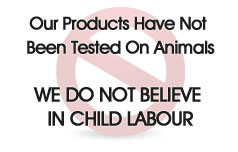 Email :
Email :
enquiry@dehlvi.com
![]() Toll free :
Toll free :
011-42141431
Search for Dealer locator or Dehlvi Approved clinics
 Email :
Email :
enquiry@dehlvi.com
![]() Toll free :
Toll free :
011-42141431
Search for Dealer locator or Dehlvi Approved clinics

Search for Diseases :
Description
A condition of having foul or offensive breath.
Persons most commonly affected: All age groups and both sexes.
Organ or part of body involved: Mouth
Symptoms and indications: Foul or offensive odour from the mouth.
Causes and risk factors: The odour is caused by bacteria from the decay of food particles, other debris in your mouth, and poor oral hygiene. The decay and debris produce a sulfur compound that causes the unpleasant odor. Bad breath also may occur in people who have a medical infection, gum disease, diabetes, kidney failure, or a liver malfunction. Xerostomia (dry mouth) and tobacco also contribute to this problem. Cancer patients who undergo radiation therapy may experience dry mouth. Even stress, dieting, snoring, age and hormonal changes can have an effect on your breath.
Prevention: Proper brushing including brushing the tongue, cheeks, and the roof of the mouth will remove bacteria and food particles. Flossing removes accumulated bacteria, plaque and food that may be trapped between teeth. Mouth rinses are effective in temporary relief of bad breath. Avoid foods that take a long time to travel through the digestive system. Red meat, fried food, and processed food all linger in the system and cause both constipation and halitosis. Mucus slows waste matter in its passage through the intestines. Cut down on mucus-forming foods like dairy products, refined floursm chocolates, andbananas. Also avoid foods that are high in refined sugar, which leads to tooth decay. Be especially wary of sticky treats like caramels or hard candirs, which can lodge themselves between your teeth and attract oral bacteria. Foods that are likely to cause temporary bad breath include garlic, onions, strong cheese, cured meats, and anchovies.